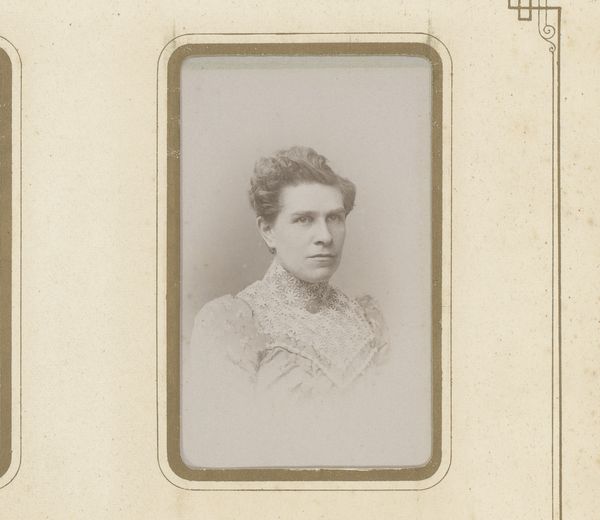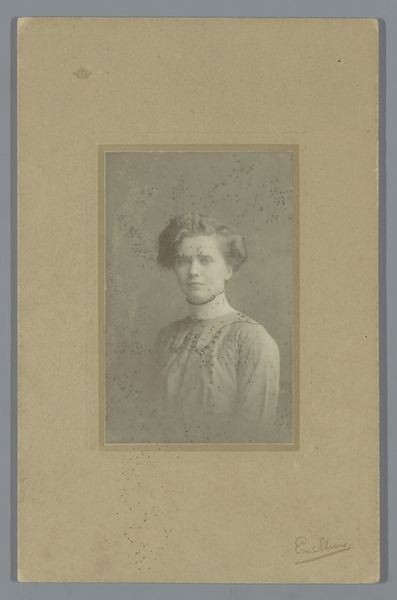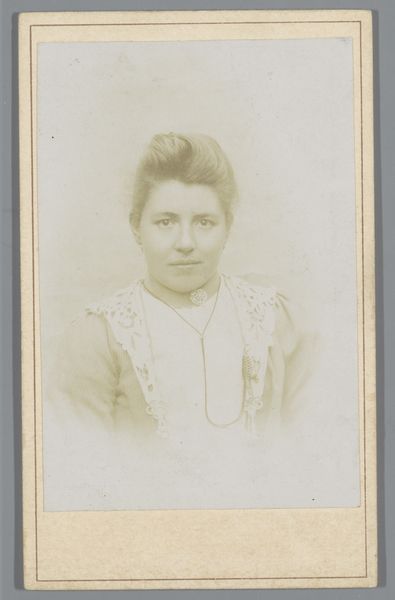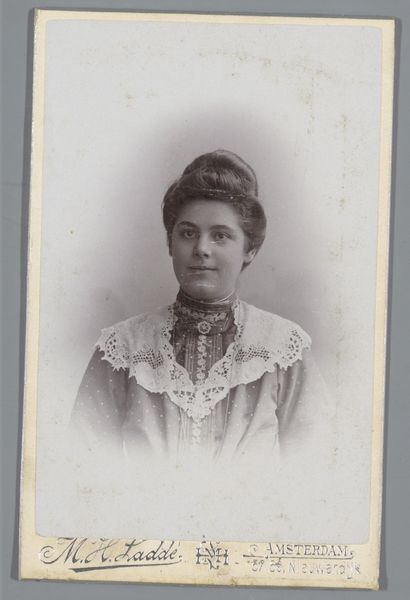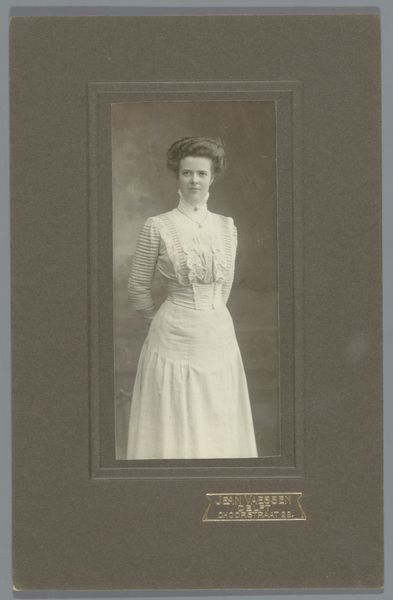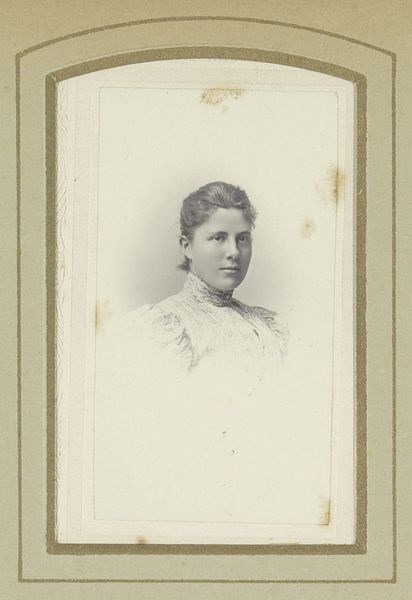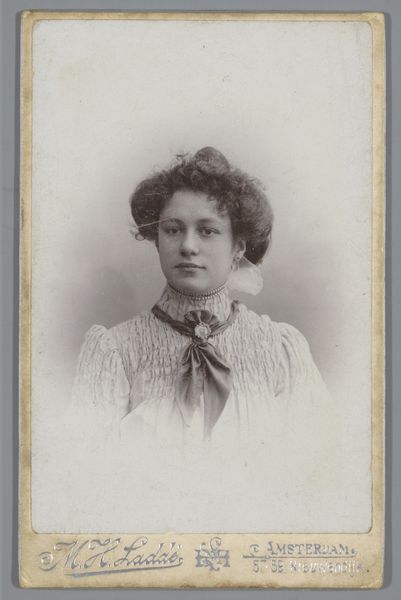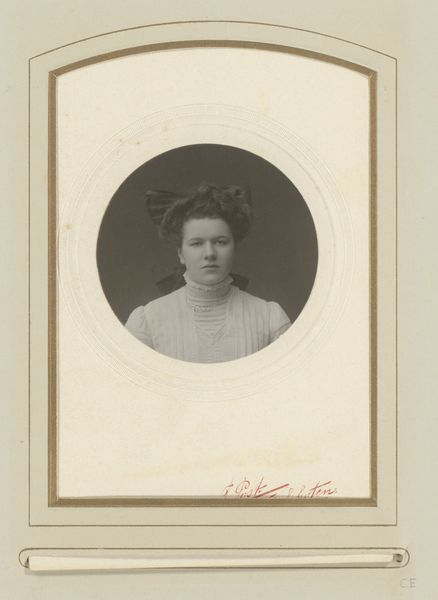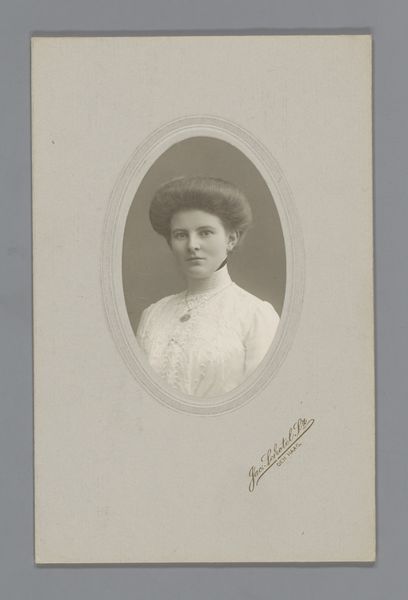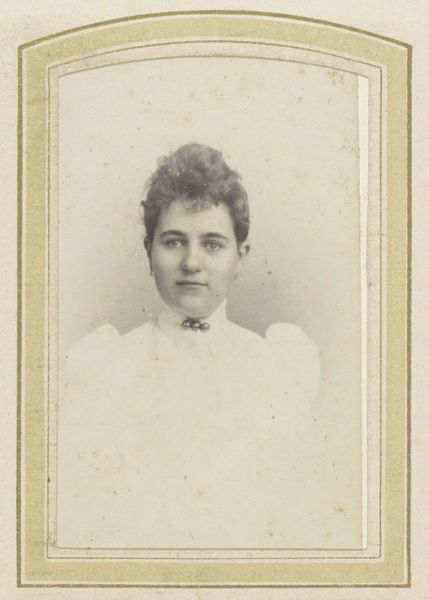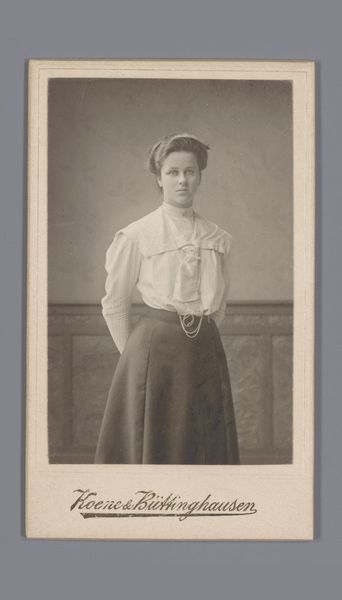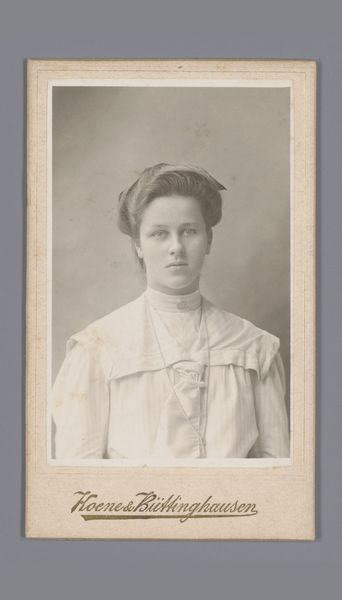
photography
#
portrait
#
photography
#
realism
#
poster
Dimensions: height 141 mm, width 100 mm
Copyright: Rijks Museum: Open Domain
Curator: Standing before us, we have a piece entitled "Portret van een vrouw," or "Portrait of a Woman," crafted sometime between 1897 and 1902. The work, a photograph, is attributed to Guillame Maximilien Zimmermann and is housed here at the Rijksmuseum. What catches your eye? Editor: She seems…resigned? Or perhaps that’s just the monochrome adding a veneer of wistful bygone days. I immediately wonder about the lace. All those delicate details…someone had to make that dress. Curator: Ah, yes! The lace indeed tells a tale of production and labour. Look closely; consider the context of that time. Who was making lace like that? What kind of social conditions were those lace makers under? Zimmermann isn't just capturing a woman; he's implicitly referencing a whole system of material production. Editor: Exactly. You see this image, presented to us almost as high art within the walls of a museum, yet its very existence is underpinned by unseen labour, materials extracted from the earth, processed, and consumed. Curator: It’s funny you should say that, because there’s something hauntingly intimate in this work for me. Her posture, those eyes… I feel I know her story already. As though the camera unearthed a profound melancholy, or perhaps it simply held up a mirror. She seems self-possessed and yet so very weary. Editor: Maybe it's the long exposure times inherent in photography back then. All those minutes of stillness etching themselves onto the plate… a stillness enforced on the sitter. And look at the elaborate mount around the photograph. It all screams "bourgeoisie" to me! Curator: Indeed, photography had become newly accessible but still imbued with aspiration. Perhaps that melancholy comes from knowing how constrained even affluent women of the era were. So many pressures. This image embodies this. The rigid framing of the photograph reinforces her own rigid social role. Editor: I agree. Even in "art" like this portrait, we’re seeing societal structures play out. What are the means of image production, the cultural values that shape it, and the hands that literally made it possible. Food for thought. Curator: So much to unravel from one deceptively simple photograph. It’s an artwork layered in contradictions and unspoken truths, each glimpse unveils yet another complexity.
Comments
No comments
Be the first to comment and join the conversation on the ultimate creative platform.

